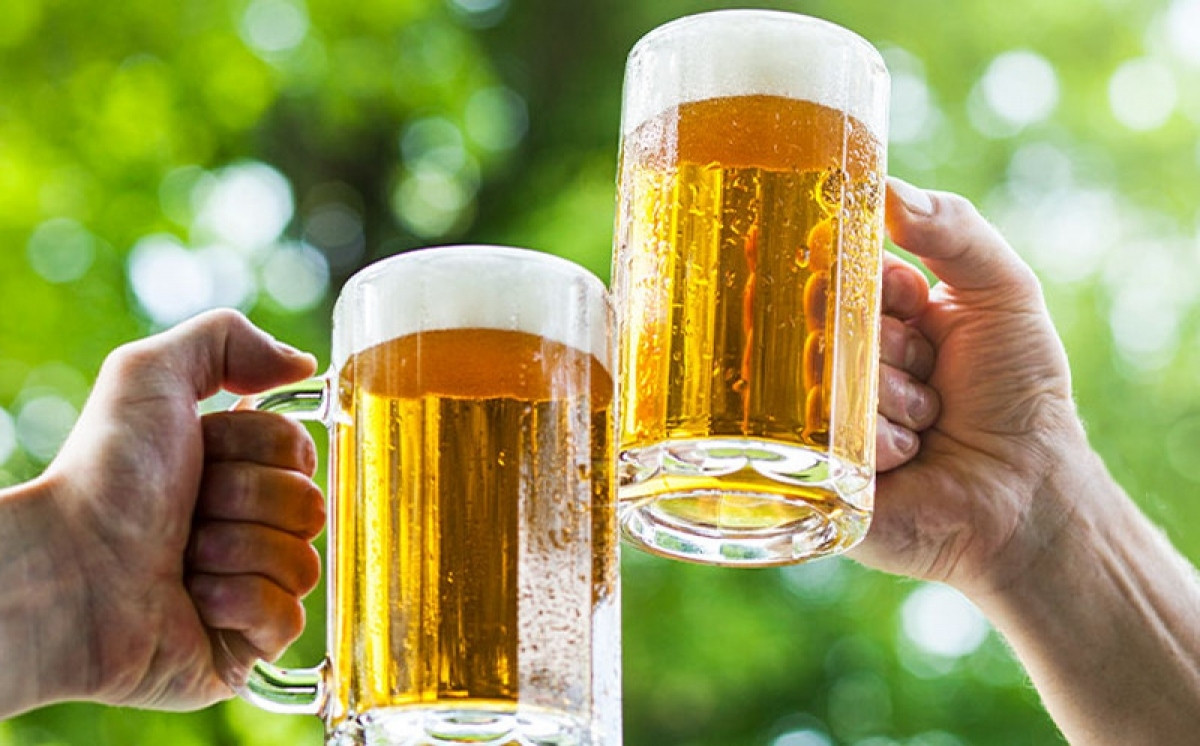
Submit a comment
With a low alcohol content, beer is considered safer than wine and has a cooling effect on the body during hot weather. However, beer does not have a cooling effect as many people mistakenly believe.

In the hot season, beer is one of the most popular drinks because it helps quench thirst quickly. Drinking beer is also an indispensable pleasure for many people, especially men after a hard day's work or after each football match, each meeting ...
With a low alcohol content, beer is considered safer than wine and has the effect of cooling the body and reducing heat. Therefore, the amount of beer consumed in each drinking session is often many times the permitted limit, at least 2-3 glasses, some people even drink dozens of glasses.
According to Dr. Truong Hong Son - Director of the Vietnam Institute of Applied Medicine, it is true that when drinking a glass of cold beer in one gulp, many people feel their thirst is immediately quenched. However, beer is not considered a nutrient or a drink with a cooling effect as many people mistakenly believe.
Beer is about 80 - 90% water. However, beer also contains other ingredients such as malted barley, hops and yeast. Beer contains alcohol and when consumed, it increases the heart rate and respiratory rate. Along with increased breathing rate, drinking beer also causes frequent urination. Therefore, drinking a lot of beer will lead to dehydration. Therefore, beer has the effect of quenching thirst but does not help cool the body.
According to the World Health Organization, adults should not consume more than 40g of alcohol per person per day. However, it is best to limit it to less than 20g of alcohol per person per day. For beer with an alcohol concentration of 5%, a person should only drink 2 glasses of beer (equivalent to about 400ml) per day.
“One thing to note is that in one hour, our liver can only excrete about 10g of alcohol. So, if before each main meal (lunch and dinner), you drink a glass of beer equivalent to 200ml, the liver will not have to work too hard and will not affect liver function. If you drink more, the amount of alcohol absorbed into the body is too much and concentrated at one time, which will put a burden on the liver,” Dr. Truong Hong Son warned.
Beer not only contains alcohol but also empty calories. On average, a 330ml can of beer will provide about 120 kcal. Drinking too much beer also causes excess energy, leading to fat accumulation in the abdomen for men and the hips for women, which is a risk factor for cardiovascular disease and diabetes.
Currently, there is a non-alcoholic beer on the market, so can you drink it comfortably? Answering this question, Dr. Truong Hong Son said that it is called non-alcoholic beer because the alcohol concentration in this type of beer is very low, usually below the threshold of 0.5%. If you drink 1 liter of non-alcoholic beer, you have actually taken in about 5g of alcohol into your body.
After about 30 minutes, the body will eliminate all this alcohol, but that depends on each person's constitution. Therefore, if you drink a lot, the accumulated alcohol can also be harmful to the body and when blowing with the traffic police's device, the alcohol concentration meter will still go up.